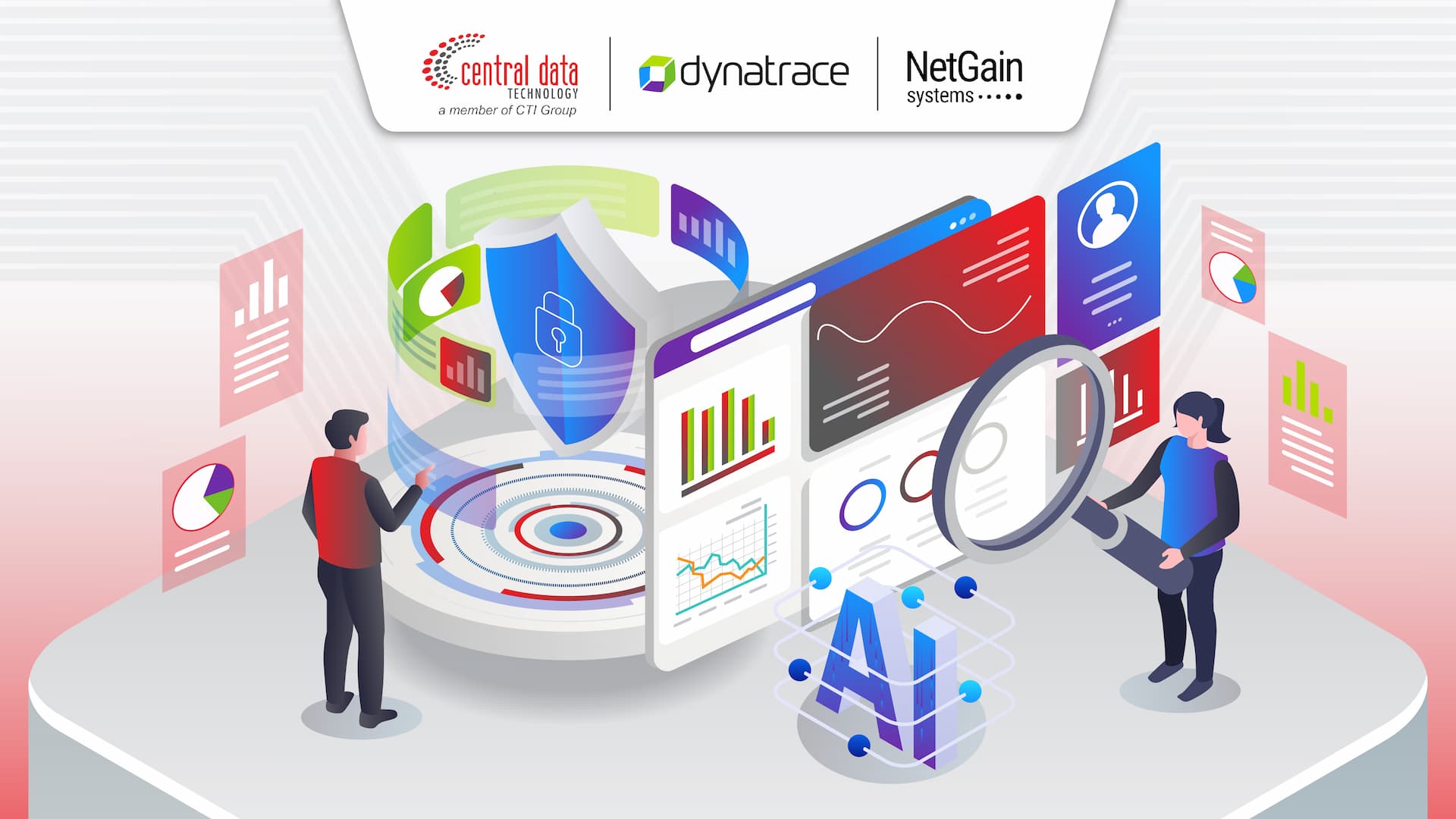
Cyber threats evolve at an alarming pace. Attacks that once took days to plan can now be launched in minutes using automation and AI. Security teams struggle with thousands of daily alerts, most false positives, while real threats slip through the noise undetected.
Traditional reactive security approaches are insufficient. Organizations need comprehensive visibility, real-time anomaly detection, and complete context to respond quickly and accurately. This is where security observability becomes a game-changer, transforming security from reactive firefighting into proactive defense.
What is Security Observability?
Security observability is a security approach providing comprehensive visibility, deep context, and real-time analysis capabilities across your entire IT infrastructure, from applications and networks to systems and user behavior. Unlike traditional monitoring that simply collects logs and generates alerts, observability enables security teams to understand “why” something happened, not just “what” occurred.
Modern platforms integrate data from multiple sources into a unified view. With AI and machine learning, systems correlate seemingly unrelated events, identify complex attack patterns, and provide complete context for faster investigation and response.
Security Challenges Without Observability
Organizations relying on traditional security tools without observability face significant obstacles that slow threat detection and response.
Alert Fatigue and Noise Overload
Security teams drown in thousands of daily alerts. Without context and intelligent prioritization, analysts spend time sifting through false positives rather than focusing on genuine threats.
Lack of Investigation Context
Logs and events scattered across various tools make investigation time-consuming and manual. Analysts must switch between multiple consoles, manually gather data, and correlate events without automated assistance.
Blind Spots in Cloud-Native Environments
Containers, microservices, and serverless architectures create ephemeral workloads that are difficult to monitor with traditional tools. Threats can appear and disappear before detection.
Slow Response Time
Without automated workflows and real-time context, detection to containment can take hours or days, giving attackers ample time to steal data or spread laterally.
Core Components of Security Observability
Effective security observability depends on integrated components working together to provide visibility, context, and actionable intelligence.
Unified Data Ingestion
Collects and integrates data from all sources, application logs, network traffic, security events, user behavior, cloud infrastructure into a single platform for comprehensive analysis.
AI-Powered Analytics and Behavioral Monitoring
Machine learning analyzes normal patterns and detects anomalies in real-time. The system learns from historical data and continuously adapts to evolving threats.
Contextual Threat Intelligence
Enriches security events with additional context, user identity, device information, location, application state, historical behavior, so analysts can quickly assess severity and priority.
Automated Investigation and Response
Workflow automation executes routine investigations, gathers evidence, and takes containment actions automatically for certain threats, dramatically accelerating response time.
How Security Observability Works
Security observability platforms continuously collect telemetry data from across IT infrastructure. This data includes application traces, metrics, logs, security events, and user activity, processed and correlated in real-time to identify patterns and anomalies.
AI and machine learning engines analyze these data streams, comparing them against learned baseline normal behavior. When the system detects deviations, unusual data access, suspicious network connections, abnormal user behavior, alerts are prioritized based on severity, context, and potential impact. The platform provides complete context: who’s involved, which systems are affected, and what the potential impact is.
For deeper investigation, analysts perform forensic analysis with access to historical data and correlation timelines showing event sequences. Automated playbooks execute containment actions, isolating compromised endpoints, revoking user access, blocking malicious IP addresses within seconds or minutes instead of hours.
Benefits of Security Observability for Business
Implementing security observability delivers tangible advantages directly impacting organizational security posture and operational efficiency.
Faster Threat Detection and Response
With AI-powered analytics and automated correlation, time from initial compromise to detection is drastically reduced. Automated response workflows accelerate containment, minimizing damage and reducing attacker dwell time.
Reduced Alert Fatigue
Context-aware prioritization significantly reduces false positives. Analysts focus on genuine high-severity threats, improving productivity, and job satisfaction.
Comprehensive Visibility Across Hybrid Environments
Unified platforms provide visibility across on-premises, multi-cloud, and edge environments. No blind spots, including ephemeral containers and serverless workloads.
Improved Compliance and Audit Readiness
Automated compliance monitoring, comprehensive audit trails, and regulatory reporting ensure adherence to frameworks like GDPR, PCI DSS, and Indonesian local regulations.
Proactive Threat Hunting
With access to rich datasets and powerful analytics, security teams proactively hunt for indicators of compromise and emerging threats before they escalate into incidents.
Security Observability Solutions from Central Data Technology
Implementing effective security observability requires platforms integrating full-stack visibility with advanced analytics and automated response. CDT brings three industry-leading solutions creating comprehensive security observability infrastructure.
Dynatrace Application Security
Dynatrace Application Security delivers runtime application protection with deep visibility into application behavior and dependencies. The platform integrates seamlessly with Dynatrace’s full-stack observability, providing complete context from infrastructure to code level.
Dynatrace Security Advisor provides automated insights and prioritization based on actual risk, not just theoretical vulnerabilities. With continuous runtime monitoring, the system detects exploitation attempts in real-time and triggers automated responses to block attacks before they reach critical assets. The platform excels in cloud-native and Kubernetes environments.
Dynatrace Threat Observability
Dynatrace Threat Observability leverages the Grail data lakehouse for unified storage and analytics of massive volumes of security and observability data. With an AI-powered correlation engine, the platform identifies sophisticated attack patterns hidden in noise.
Advanced threat hunting capabilities enable security analysts to quickly query historical data, correlate events across distributed systems, and identify indicators of compromise. Automated investigation workflows accelerate forensic analysis. Integration with cloud platforms and security tools ensures comprehensive coverage with automated response capabilities.
NetGain Systems Security Analytics
NetGain Systems Security Analytics provides a ready-to-use, unified analytics platform combining SIEM capabilities, user behavior analytics, and threat intelligence in a modular architecture designed to integrate seamlessly with broader observability ecosystems.
The AI-powered threat detection engine uses advanced machine learning for behavioral analysis and anomaly identification. The system detects insider threats, compromised accounts, and sophisticated attack techniques that evade traditional signature-based detection. Automated compliance monitoring and regulatory reporting ensure adherence to regulatory frameworks with comprehensive audit trails.
Best Practices for Implementing Security Observability
Successful security observability implementation requires a strategic approach to aligning technology with business objectives and organizational security requirements.
Start by defining clear use of cases and priorities. Identify critical assets, compliance requirements, and specific threat scenarios most relevant to your industry and business model. Involve stakeholders from security, IT operations, and business units to ensure the platform meets diverse team needs and gains strong adoption.
Prioritize integration and automation from the start. Security observability is most effective when integrated with your existing security stack, IT operations tools, and incident response workflows. Automated playbooks for common scenarios accelerate response and free analysts to focus on complex investigations. Invest in team training to maximize platform capabilities and develop advanced threat hunting skills.
Also Read: What Observability is: How it Works, and its’ Benefits for Business
Security Observability as the Foundation for Cyber Resilience with CDT
In an increasingly complex digital era with an ever-evolving threat landscape, security observability is no longer optional; it’s a foundational requirement for cyber resilience. Organizations adopting an observability-driven security approach can detect threats faster, respond more effectively, and continuously improve defenses based on real-world attack data and evolving risks.
Ready to build robust security observability? Central Data Technology, as a part of CTI Group and an authorized partner of Dynatrace and NetGain Systems, delivers end-to-end expertise and support, from assessment and architecture design through implementation, training, and ongoing optimization.
Contact CDT today to discover how security observability can strengthen your defenses, reduce risk exposure, and enable confident innovation in the digital era.
Author: M. Jeko Iqbal Reza – Content Writer CTI Group

